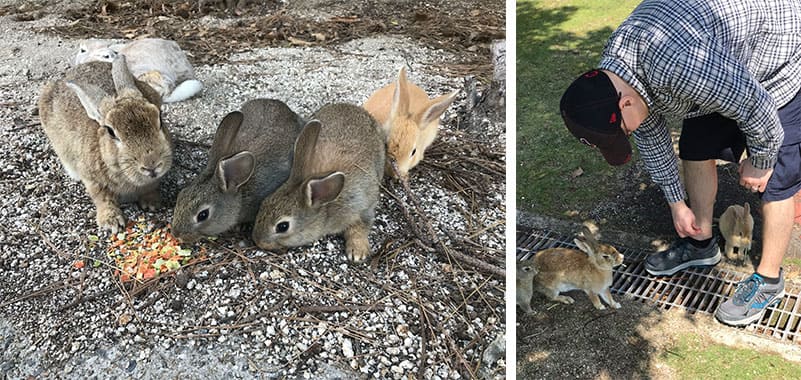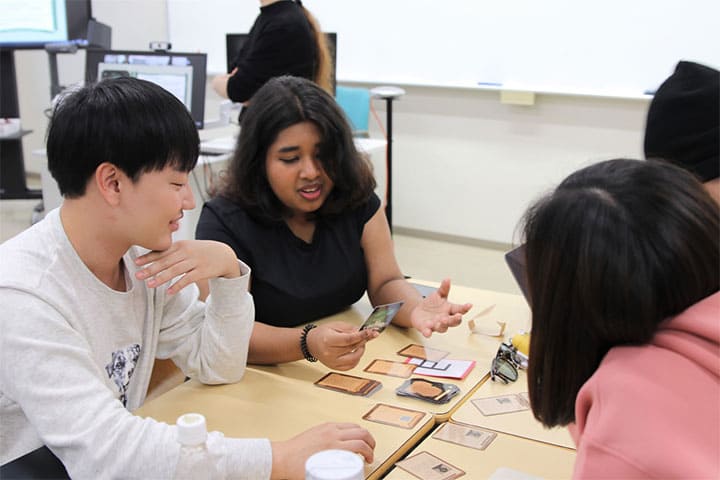Rethinking Sustainable Tourism
Categories:
Overview
Exploring sustainable tourism from a multispecies perspective, where humans and nonhumans coexist
My research explores how tourism reshapes relationships between humans and nonhumans. My work focuses on wildlife tourism in Japan, with particular attention to its sustainability.
Wildlife tourism generally refers to travel undertaken to encounter wild animals. Broad definitions sometimes include consumptive forms such as sportfishing, but my research specifically addresses non-consumptive experiences. Classic examples include observing rare wildlife in the wild, such as tours to the African savanna to view lions and giraffes or whale watching. However, in recent years, new forms of wildlife tourism have emerged that extend beyond these conventional frameworks.
A recent phenomenon is the rapid rise in popularity of destinations driven by social media. Ōkunoshima Island, widely known as “Rabbit Island” in Hiroshima Prefecture, is one of the cases. Once relatively unknown, the site gained global attention when images of free-ranging rabbits circulated online, resulting in a sharp increase in both domestic and international tourists. Parallel examples include Japan’s so-called “cat islands” and international destinations known for their population of feral pigs. This phenomenon could be described as tourist-driven or tourist-led wildlife tourism. These cases are particularly intriguing because unlike traditional wildlife tourism, which often emphasizes rare or charismatic species, they highlight rather familiar animals such as rabbits, cats, and pigs. Understanding why people travel to encounter such ordinary species is important in rethinking sustainable wildlife tourism. It provides insight into tourist motivations, management challenges, and the shifting dynamics of human-animal relations. My research examines this diversifying relationship between people, animals, and tourists, while investigating the management and sustainability issues they raise. More recently, I have been exploring how a multispecies approach that emphasizes reciprocal relationships between humans and nonhuman others can inform the practice of sustainable tourism.

The relationship between people, animals, and tourism is diversifying. On Ōkunoshima Island in Hiroshima Prefecture, social media fueled a surge of domestic and international tourists eager to see the free-roaming feral rabbits.
Novelty/Originality
Approaching tourism through an interdisciplinary and multispecies lens
What makes this research distinctive is its grounding in my interdisciplinary background. As an undergraduate, I studied anthropology and ecology. My master's research in ethnoprimatology examined monkey tourism in China. My doctoral work focused on how tourism reshapes human and nonhuman relations on Miyajima Island in Hiroshima Prefecture and Yakushima Island in Kagoshima Prefecture, combining animal geography with tourism studies. Across these projects, I have consistently bridged multiple disciplines to investigate how tourism mediates encounters between humans and nonhumans.
Building on this foundation, I now approach tourism through the lens of multispecies sustainability. This perspective moves beyond the human-centered point of view to consider how humans and nonhuman others co-shape worlds of coexistence. In parallel, I am examining the potential of “convivial conservation,” a framework proposed by Büscher and Fletcher, which emphasizes coexistence with familiar nature and challenges conventional conservation models. For example, I am studying flying-squirrel-watching tours in Saiki, Oita Prefecture, to assess how convivial conservation might be applied in practice.

Related Research
Evaluating the Convivial Conservation paradigm in Japan and the UK
Feral animals as a tourism attraction: Characterizing tourists' experiences at Ōkunoshima Island in Hiroshima, Japan.
Principal Investigator

Ritsumeikan Asia Pacific University
You can view and print a summary of this page's contents in a single PDF page here.







Growing up in Hiroshima Prefecture, I was always familiar with the deer of Miyajima Island, who have long lived alongside people. During my doctoral research, I was fortunate enough to have an opportunity to conduct research there. As tourism developed, the relationship between people and the deer has changed drastically.
Of course, this isn’t limited to deer. Tourism continually reshapes the lives of many animals (and plants). I often ask myself, “If animals could participate in meetings where tourism policies are debated, what concerns would they raise?” My research is an attempt to move step by step toward answering such questions.
Today, tourism encounters are increasingly central to the formation of new relationships between humans and nonhumans. Through dialogue with diverse stakeholders at wildlife tourism destinations, I aim to explore how such relationships are constituted and how they might be sustained.
Ritsumeikan Asia Pacific University Faculty Information
researchmap